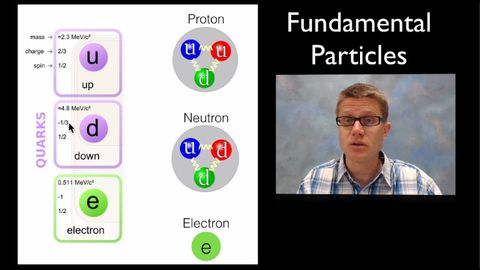基本粒子 (Fundamental Particles)
Bravo001 發佈於 2021 年 01 月 14 日  沒有此條件下的單字
沒有此條件下的單字- v.i.是重要的
- n. (u.)物質
- n.件事情;問題;原因
US /ˈpɑzɪtɪv/
・
UK /ˈpɒzətɪv/
- adj.積極的;建設性的;確定的;正極的;積極的;有利的;陽性的;樂觀的;正數的;正像的
- n.正片
US /ˈstrʌk.tʃɚ/
・
UK /ˈstrʌk.tʃə/
- n. (c./u.)結構;建築物
- v.t.構成;組織
- n.(家畜身上標明所屬的)烙印;打烙印 ; 加污名
- v.t.打烙印於;將...汙名加於...;品牌

